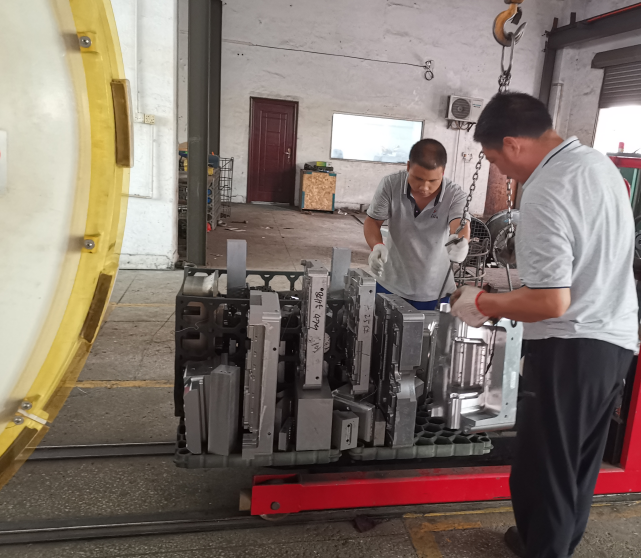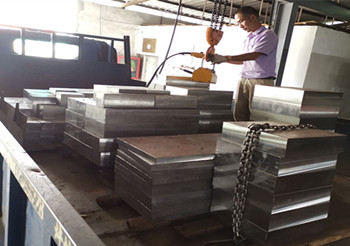The cause and solution of die hardness deficiency
2020-06-07 19:41:14The heat treatment of die steel is an important way to improve its properties. It is required that its Rockwell hardness must reach the standard. At the same time, Rockwell hardness is also a very important technical index of mechanical properties. The professionals emphasized that after heat treatment, the lack of Rockwell hardness or uneven Rockwell hardness will reduce the wear resistance and fatigue strength of the die shell, and cause the early damage of the die shell, which not only shortens the years of application of the die shell, but also has a direct impact on the smoothness of application.

1、 Cause analysis
1. The cross section of the die shell is large and the hardenability of the steel is poor. For example, the steel brand with low hardenability is selected for the large die shell.
2. In the original structure of die steel, the carbide segregation is serious or the structure is coarse, and there are segregation and aggregation of graphite carbon and carbide in the steel.
3. The forging process of the die shell is not standardized, and the effective spheroidizing annealing is not done well after forging, so that the spheroidizing structure of the die steel is poor.
4. The decarburized layer is caused when the shell surface is not cleaned, annealed or quenched.
5. If the quenching temperature of the shell is too high, the amount of retained austenite after quenching is too much, or the quenching temperature is too low, and the heating and holding time is short, the transformation of the die steel is not complete.
6. After quenching and heating, the cooling speed of the shell is slow, the classification and isothermal temperature are too high or the time is too long, so the selection of quenching medium is not appropriate.

2、 Measures to solve the lack of Rockwell hardness of die shell after heat treatment.
The processing regulations of any aluminum alloy are different, and the regulations of die shell are also different. For example, we are specialized in extrusion processing of aluminum profiles, and there will be corresponding regulations for die shell according to the commodity regulations of customers.
1. Proper selection of die steel, large die shell should be made of high alloy die steel with high hardenability.
2. strengthen the inspection of raw materials to ensure that the raw materials meet the requirements. The steel with poor raw materials should be properly calcined, spheroidized and annealed to ensure good organization. Carbon tool steel is not easy to be annealed many times to prevent graphitization.
3. Strictly abide by the forging process and spheroidizing annealing process to ensure that there is excellent preliminary heat treatment organization.
4. Before the heat treatment, the rust and oxide skin on the surface of the shell should be completely removed, and attention should be paid to the protection during heating. Vacuum heating quenching or protective atmosphere heating quenching should be used as far as possible, and good deoxidization treatment should be done during salt bath heating.


5. Properly formulate the quenching and heating process parameters of the shell to ensure the effective transformation, and make rapid cooling at a cooling speed greater than the critical cooling speed, so as to obtain the metallographic structure up to the standard.
6. Select proper quenching medium and cooling method, and strictly control classification and isothermal temperature and time.
7. Strictly control the moisture content of alkali bath, filter and regularly replace the quenching and cooling medium used for a long time, keep it clean, and regularly check its quenching and cooling characteristic curve.
8. For the large-size die shell, the immersion time of quenching and cooling medium shall be appropriately extended to prevent the temperature of the die shell out of the quenching and cooling medium from being too high.
9. The die shell shall be tempered timely and effectively after quenching, and the tempering temperature shall be prevented from being too high.
10. Deep cooling treatment (such as - 110 to - 196 ℃) can be adopted for the die shell with high Rockwell hardness








